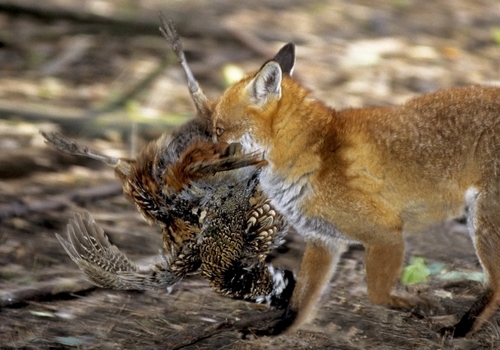
The Scottish Government is seeking views via a consultation on proposals to strengthen the law relating to the use of dogs to hunt and flush foxes and other wild mammals in Scotland. The proposals include the possibility of implementing a licence scheme to hunt and flush with more than two dogs. This could have serious implications across rural Scotland for livestock and ground-nesting birds. GWCT Scotland is responding to the consultation, and we encourage members to do so as well.
The main proposals in the consultation appear to contradict the independent review carried out by Lord Bonomy, who noted that “the use of packs of hounds to flush out foxes to be shot remains a significant pest control measure, both to control the general level of foxes in an area as well as to address particular problems affecting a farm or estate”, and that imposing a limit of two dogs, “could seriously compromise effective pest control in the country”.
We believe that the main proposals are unnecessary and contradict the conclusions of the independent review carried out by Lord Bonomy. The Scottish Government has an obligation to ensure that farmers can continue to protect their livestock and that all land managers can look after wildlife. These proposals undermine the ability to do that without any clear welfare benefit for the fox. Any licensing scheme implemented for the use of packs of dogs must be quick and accessible.
Some points for consultation responses:
- The Rural Environment Land Management (‘RELM’) group of organisations that GWCT advises in Scotland feel there should be no limit to the number of dogs which may be used, particularly in relation to hunting and flushing foxes from areas of dense woodland or vegetation
- The management of foxes is vital to protect both livestock and vulnerable ground-nesting birds
- If licences become one of the few options available to farmers and land managers to protect livestock and vulnerable wildlife, then the system must be fair, simple to administer and practical to apply for. People have a right to protect their property and a licensing process that is slow or cumbersome, with unreasonably high thresholds set for the grant of a licence, may simply disincentivise legal and appropriate predator control, with consequent biodiversity loss.
- The consultation appears to misrepresent the findings of Lord Burns and Lord Bonomy, where it suggests a two-dog limit is a welfare measure preventing occasions when foxes are still killed by dogs under the current rules. There is clear no scientific or practical justification to the limit, and experience from upland areas in England and Wales since 2002 backs this up.
If you are in any way affected by the proposals made in the consultation, we recommend that you respond directly to the Scottish Government's call for views on the consultation. The consultation is short, and the “tick-box” format implies that numbers of responses will count as much as detailed arguments. It closes on 15 December. It can be found online here >